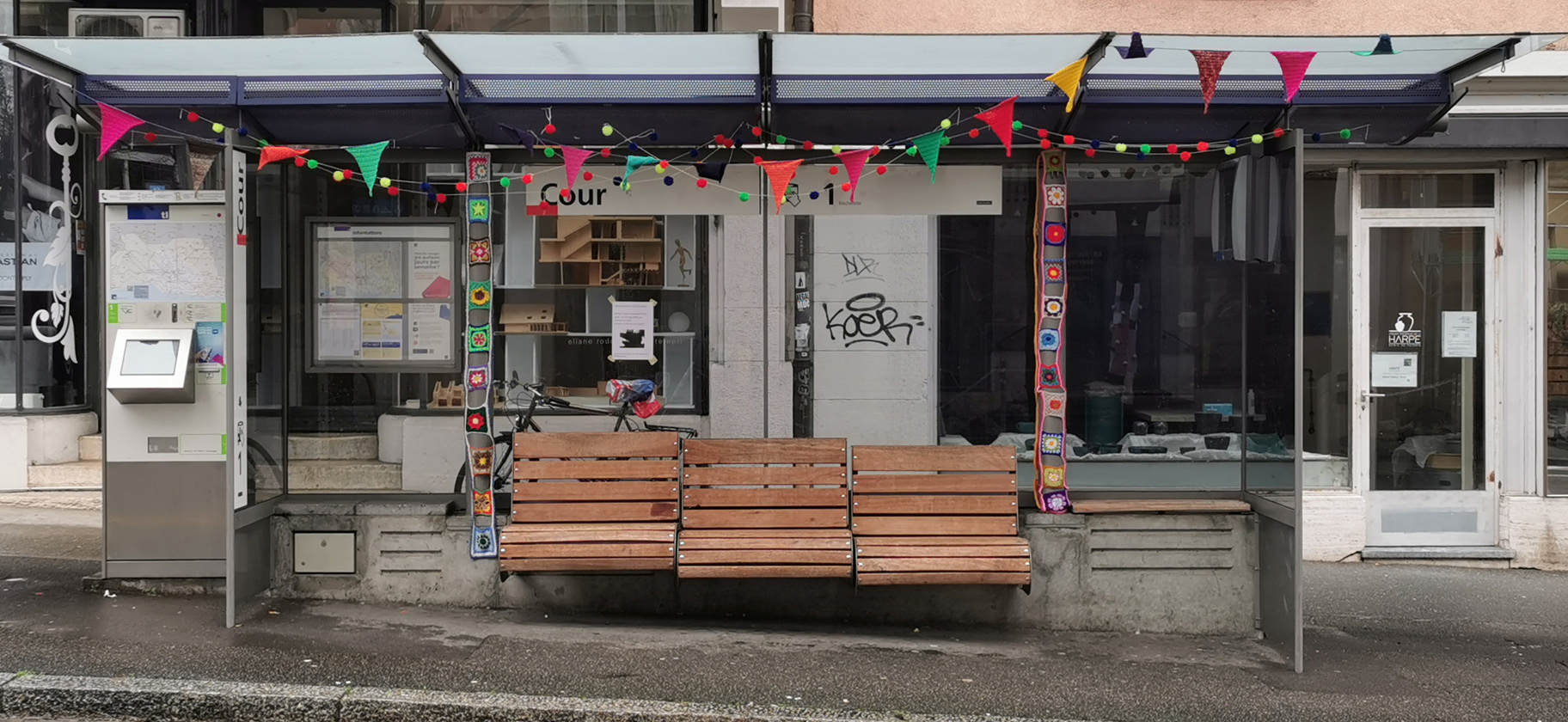Tricot Graffiti de la Harpe
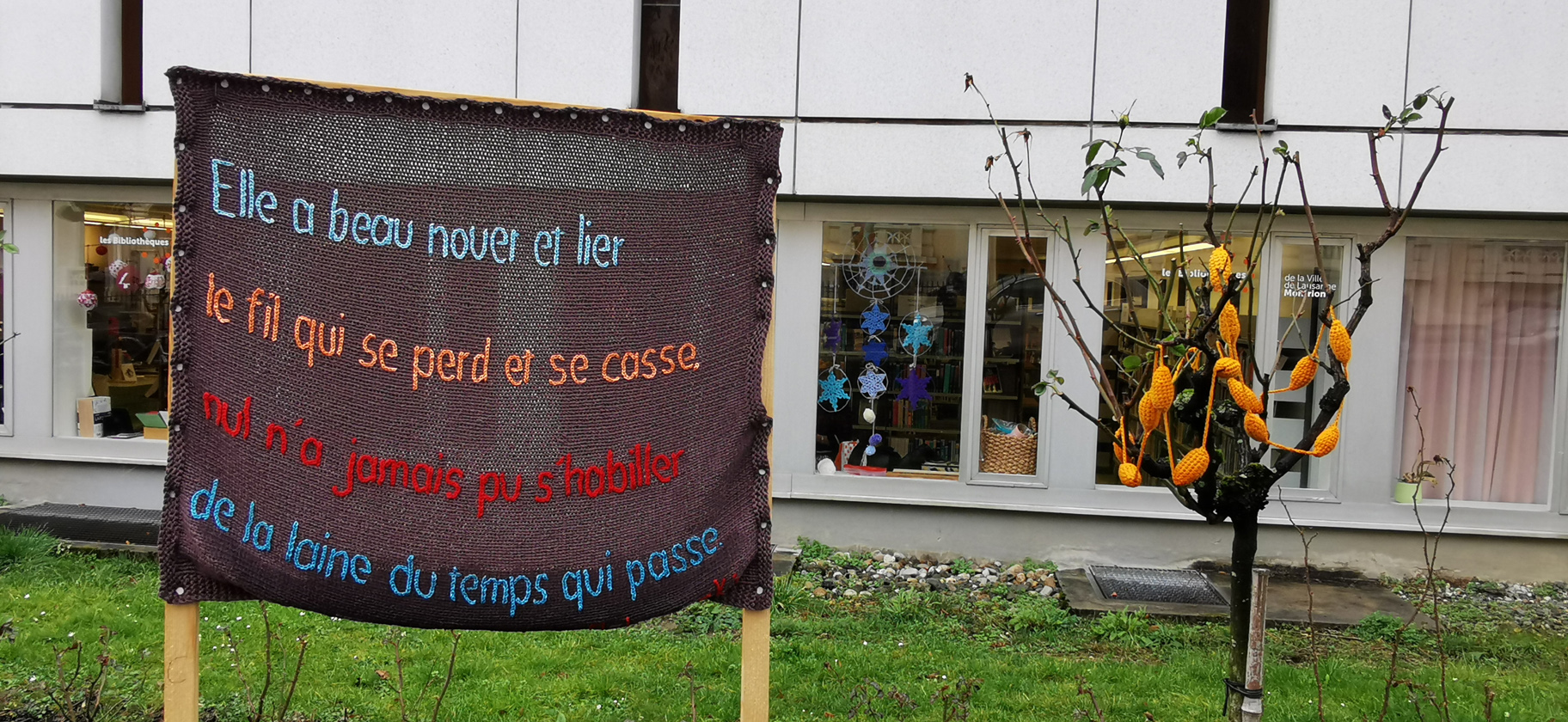
As visitors to foreign lands, our perception of places and the reasons why we visit may be far removed from the life of those who call it home. A Renoir painting where well-to-do theatre-goers wear top hats and Sunday frocks as they laze on the wrought-iron benches of a lush chateau garden may evoke rich images of Paris with its mazy streets and belle époque cafés, but they are a century removed from the banlieues where thousands of North African Maghreb and assorted émigrés of centuries of French colonialism eke out a living in modern France. Those who travel to France do so for the former. All of the immense stone castles that dot the European continent from northern Scotland to the Alhambra in southern Spain conjure scenes of a violent and turbulent history of great kings and brave knights but speak little of the commoners who for centuries have cultivated their existences in the suburbs and countrysides that surround them. We marvel at the pyramids that have been standing for more than four centuries and the dynasties of their pharaohs that lost in our awe is the kushari vendor making ends meet in the shadow of a mosque in modern Cairo. Kings and queens have long been patrons and keepers of culture that it is rare for culture to capture the spirit of common people.
Lausanne sits on the northern shore of Lac Léman and its central train station divides the city into two halves. North of the station is the old city built on the hillside with winding cobbled streets that now house brand-name boutiques and lead up to the cathedral. South of the station is the neighbourhood known as Ouchy that leads down to the shoreline where the hotels and the ferry terminal are. Parks and pedestrian walkways line the shore and look out toward the stunning sight of the French alps on the far side of the lake. I was headed that day to the home of an old friend in a tiny Swiss village below Verbier and, as I walked along the shore and looked out at the mountains on the far side, I thought to myself that that was the image I had always had of Switzerland. Seeing those snow-covered peaks, I imagined funiculars and well-groomed slopes covered in crisscrossing skiers and snowboarders delighting in their après and apero by a crackling fire in wooden chalets that reeked of raclette and gherkins. I was unaware that culture and the spirit of the common person were about to crisscross with one another along a single street of this otherwise unremarkable Swiss city.
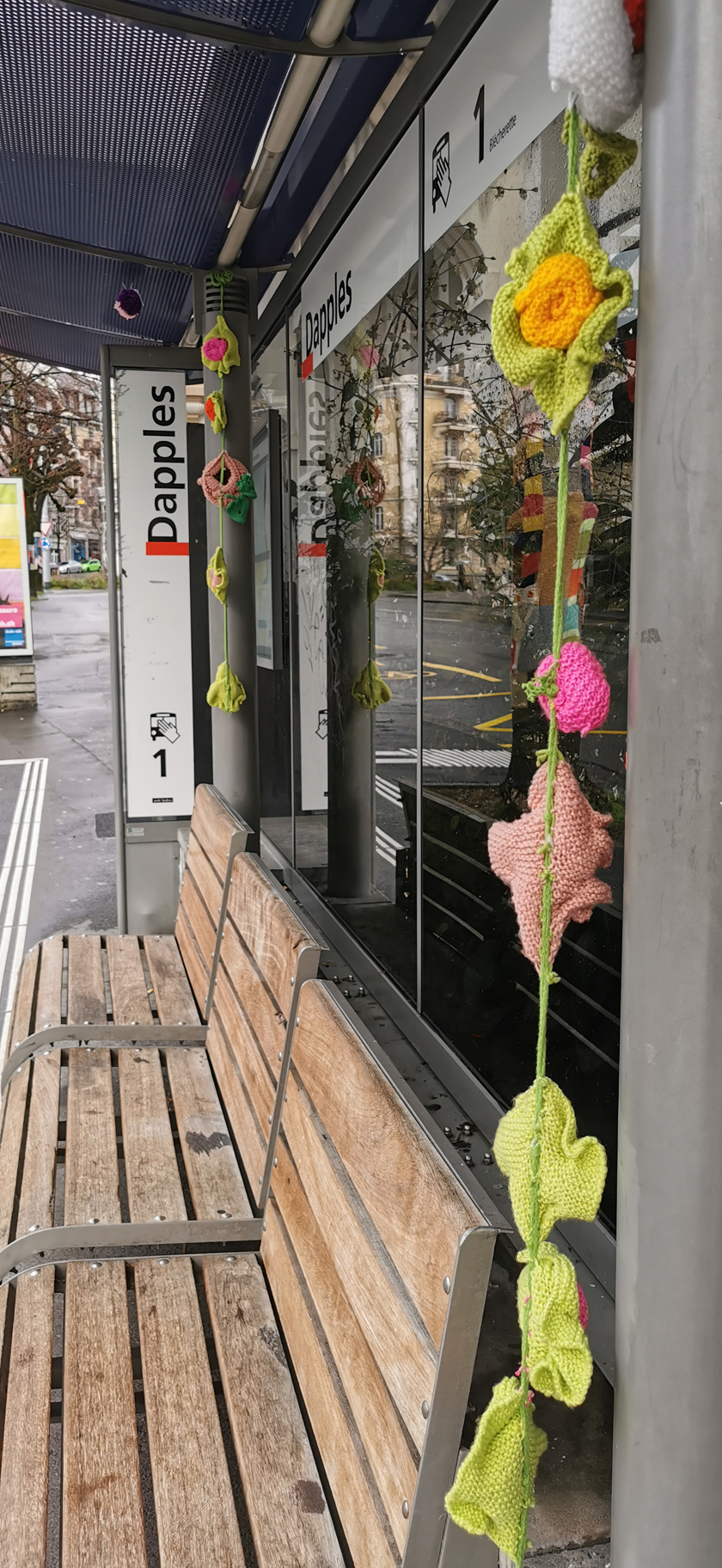 Two main roads run parallel to each other from the station to the lake – the Avenue d’Ouchy and the Avenue Frédéric-César-de-la-Harpe. It was while walking the latter that I happened upon something that caught my attention. Someone had adorned the Dapples bus stop with ornaments knitted from yarn. There is something so functional about a bus stop that we rarely stop to think of it as culture. In just about every city from Juno to Wollongong, a bus stop is a bus stop without all that much variation in its theme. A bench, a shelter, a timetable and a map and that is all you need because bus stops are not meant to be places that are used to express joy. But, here someone had decided to offer a touch of colour to the most mundane of places that no one wants to be because one only goes to a bus stop to go somewhere else. No one goes to a bus stop just to be at the bus stop, but that does not mean that it is impossible to enjoy one’s time there as evidenced by this rare touch of the exceptional. I took a moment to snap a couple of photos of this small but remarkable touch of colour on a grey day and continued my walk to the lake.
Two main roads run parallel to each other from the station to the lake – the Avenue d’Ouchy and the Avenue Frédéric-César-de-la-Harpe. It was while walking the latter that I happened upon something that caught my attention. Someone had adorned the Dapples bus stop with ornaments knitted from yarn. There is something so functional about a bus stop that we rarely stop to think of it as culture. In just about every city from Juno to Wollongong, a bus stop is a bus stop without all that much variation in its theme. A bench, a shelter, a timetable and a map and that is all you need because bus stops are not meant to be places that are used to express joy. But, here someone had decided to offer a touch of colour to the most mundane of places that no one wants to be because one only goes to a bus stop to go somewhere else. No one goes to a bus stop just to be at the bus stop, but that does not mean that it is impossible to enjoy one’s time there as evidenced by this rare touch of the exceptional. I took a moment to snap a couple of photos of this small but remarkable touch of colour on a grey day and continued my walk to the lake.
I was not able to walk more than a few steps before I was stopped again by the sight of an iron fence surrounding an apartment building that had been adorned with a streamer of knitted yarn. Bursting from the grey stone wall and the rust of the fence was the splendour of alternating knit red and magenta flowers and green leaves connected by a vine of yarn. The bus stop and the apartment building were located just across the street from one another and I figured that the same rogue artist must have been responsible for both. I snapped a photo and continued on only to be stopped by the tree trunk just a few metres further down the road that had been dressed in a cozy and ornate knitted quilt of every colour.
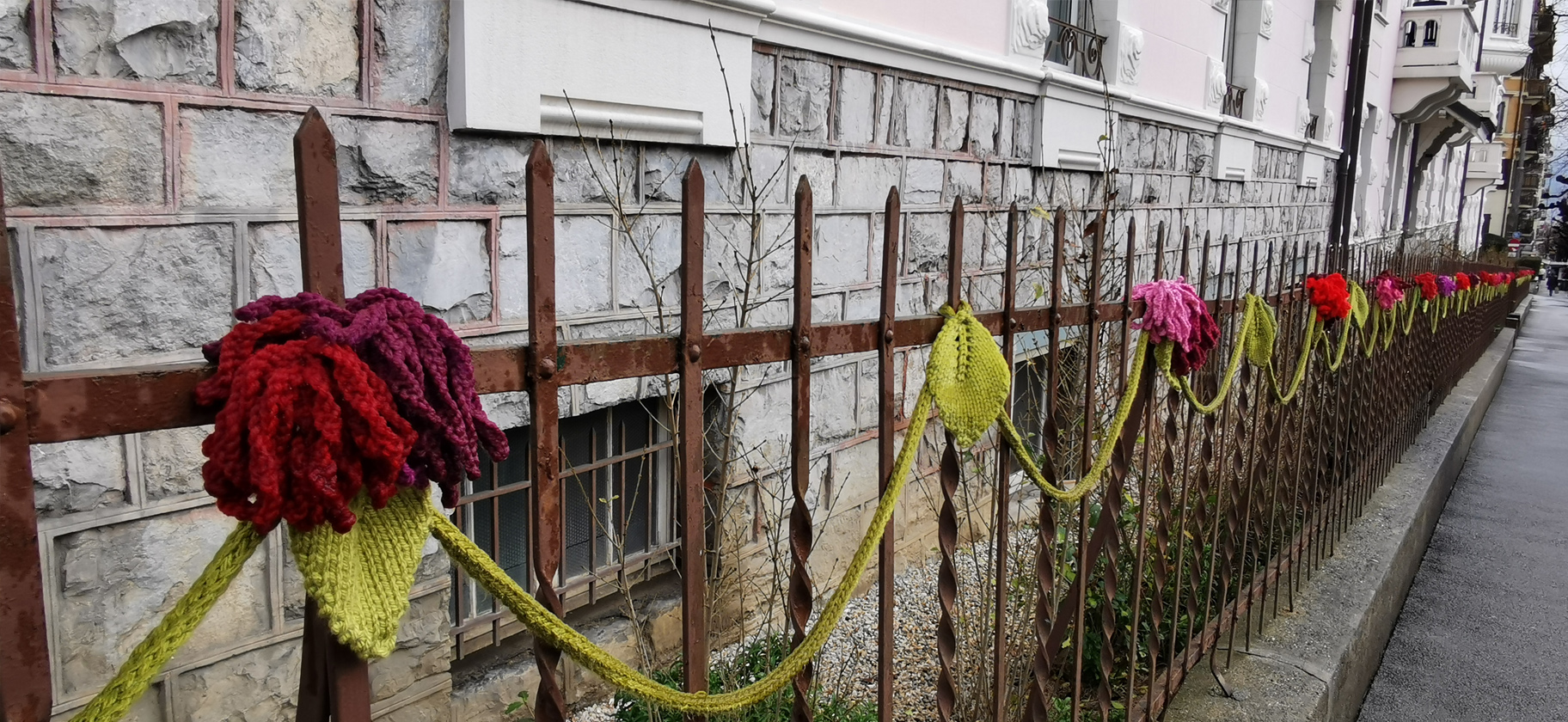
The world seemed to slow down right then. Every day I walk through cities whose roads I don’t know and seem strange that the details bleed together and strike me all at once. They create a sort of painting that I am seeing from across the room and that weave the brush strokes together. I notice things like: how even is the footing on the street? What kind of restaurants are open? What is the public transit like? And, how is the air quality? Now I looked up and gazed all the way down the length of the street and noticed that every tree along the way had been covered in a knit cozy similar to the one next to which I was standing. Every brushstroke of the painting that was Lausanne became separate and clear. I was no longer walking along the street on my way to the lake. Instead, I was standing in the middle of an art exhibition.
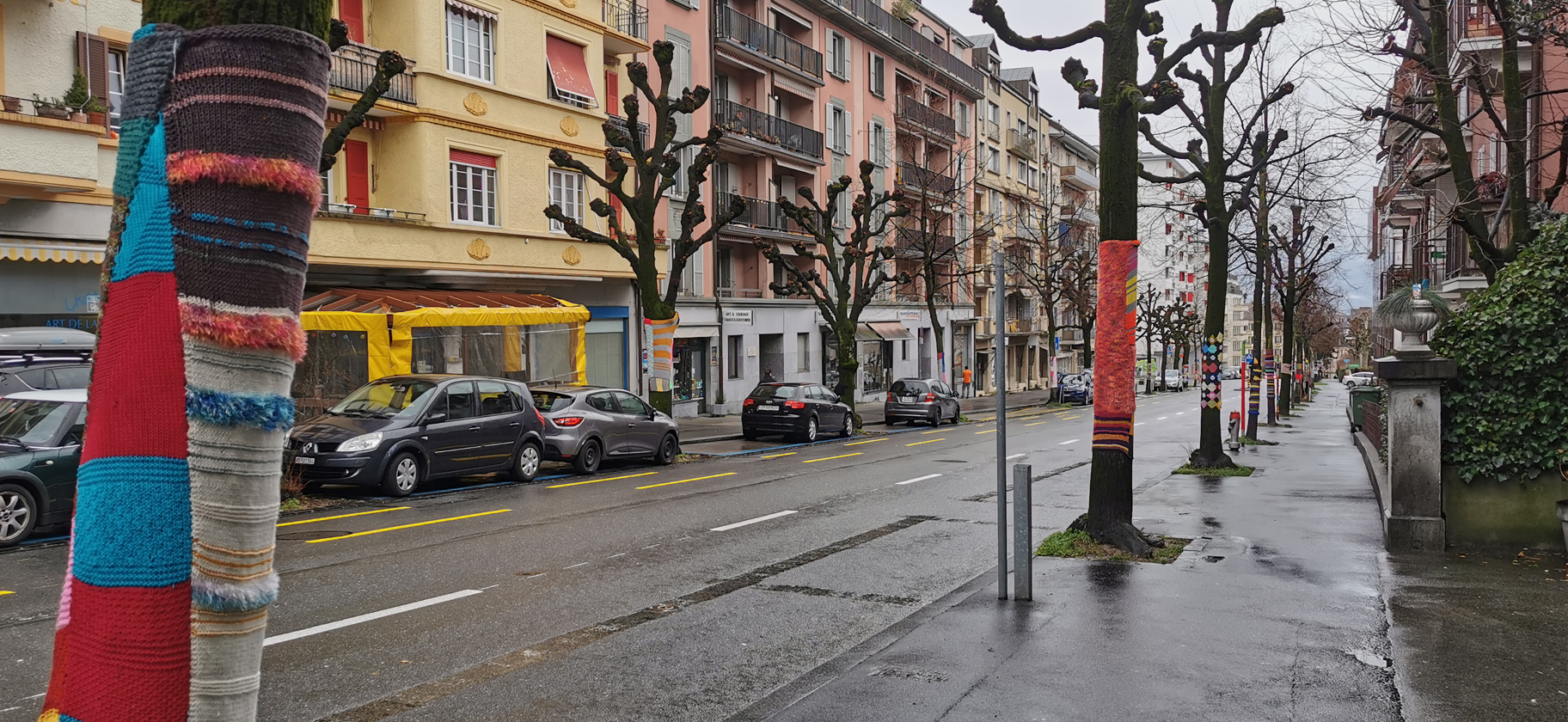
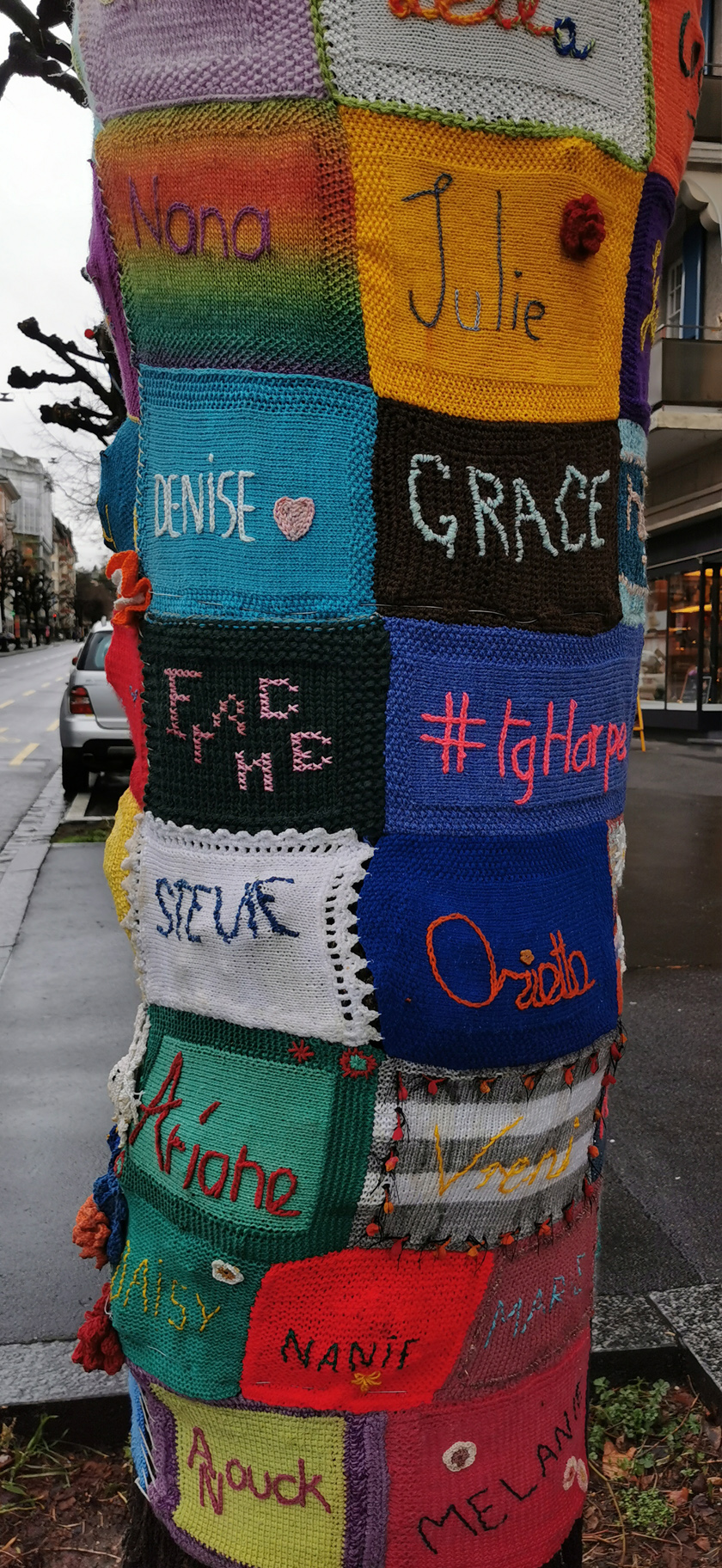
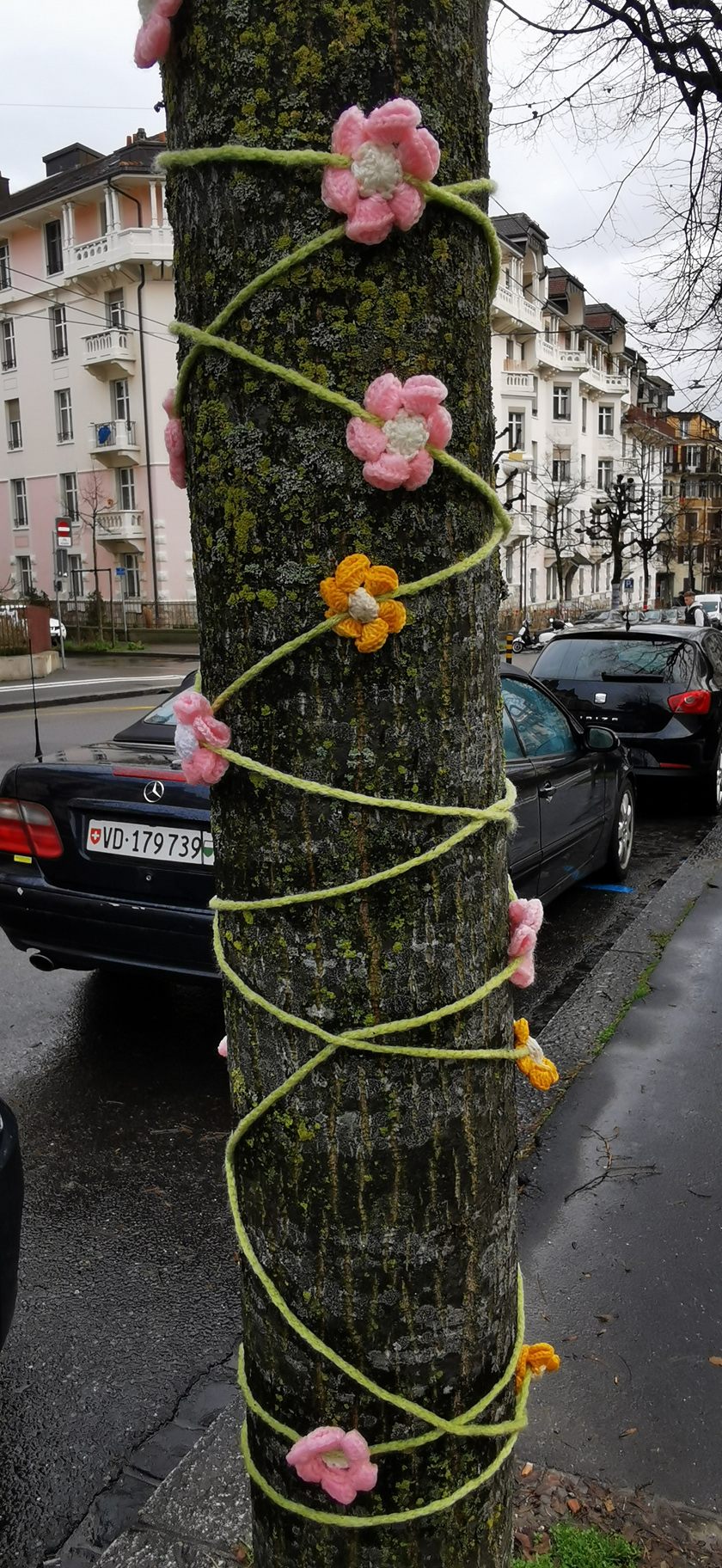
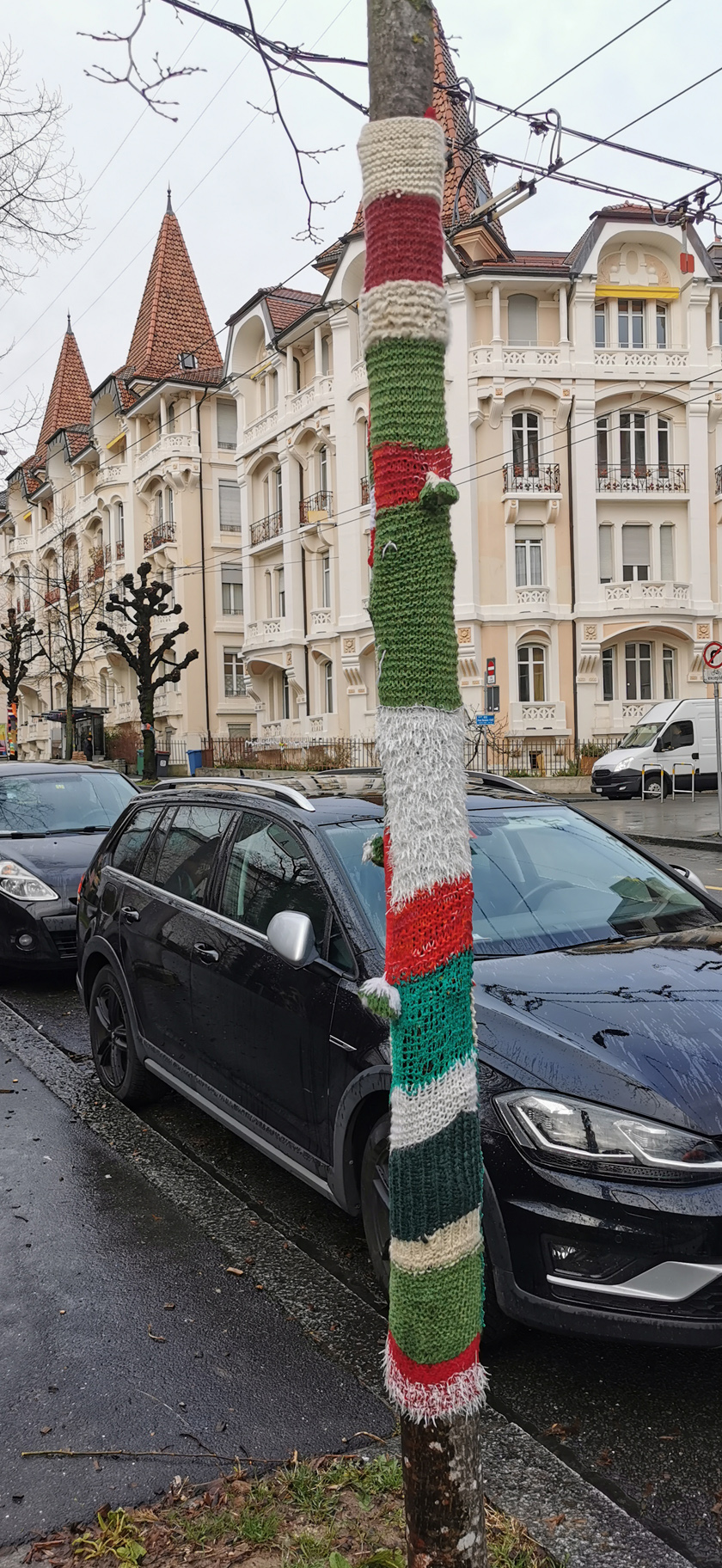
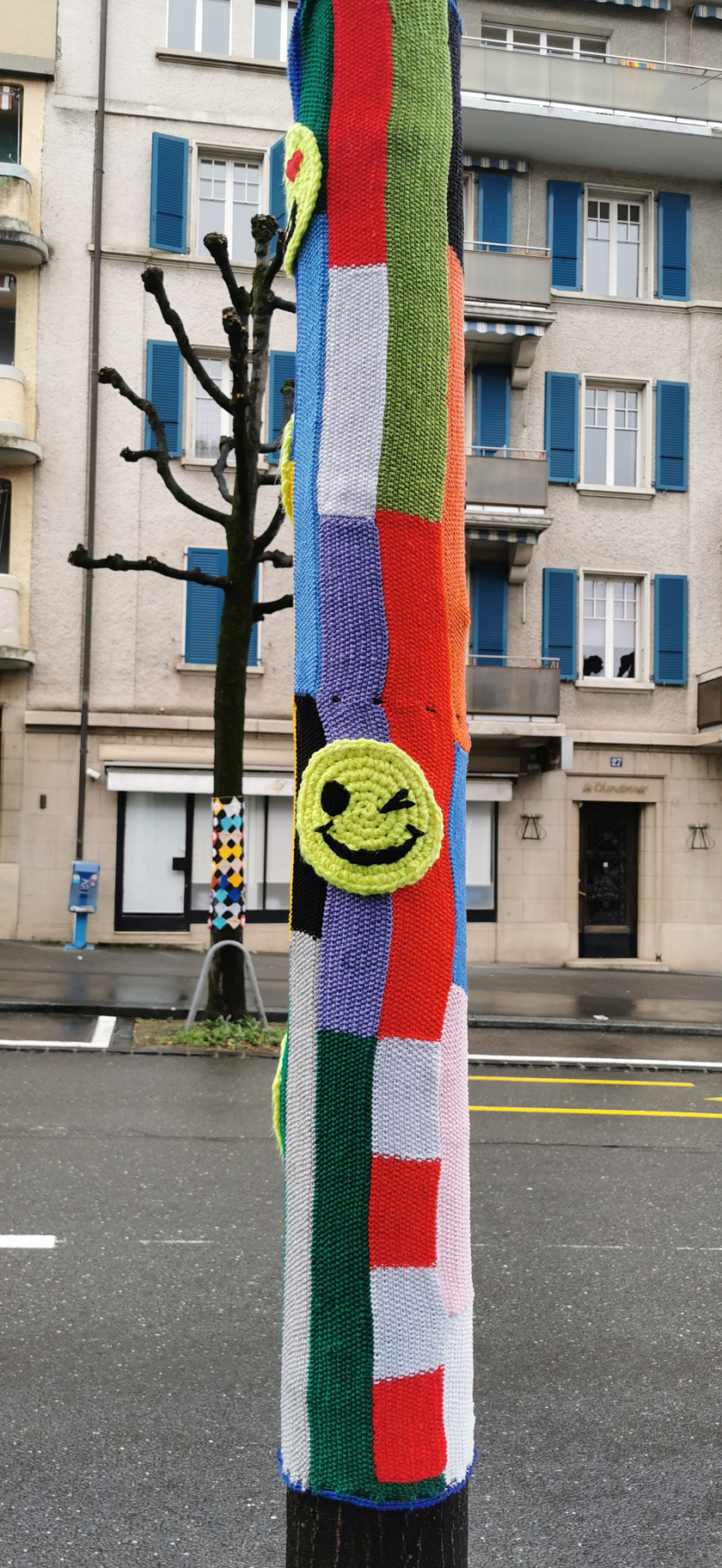
Every tree and every bus stop along the way was similarly decorated. Within them, there were messages of hope and shout-outs to friends and neighbours. There were decorative mobiles dangling from trees, ornate shapes tucked in between signposts, and elegant sketches of butterflies and bumblebees all made out of yarn clinging to park fences and stone walls. There was even a bicycle of which every spoke was dressed in every colour of the rainbow and was chained to a sign pole that was itself decorated with soft delicate knitted touches of yarn.
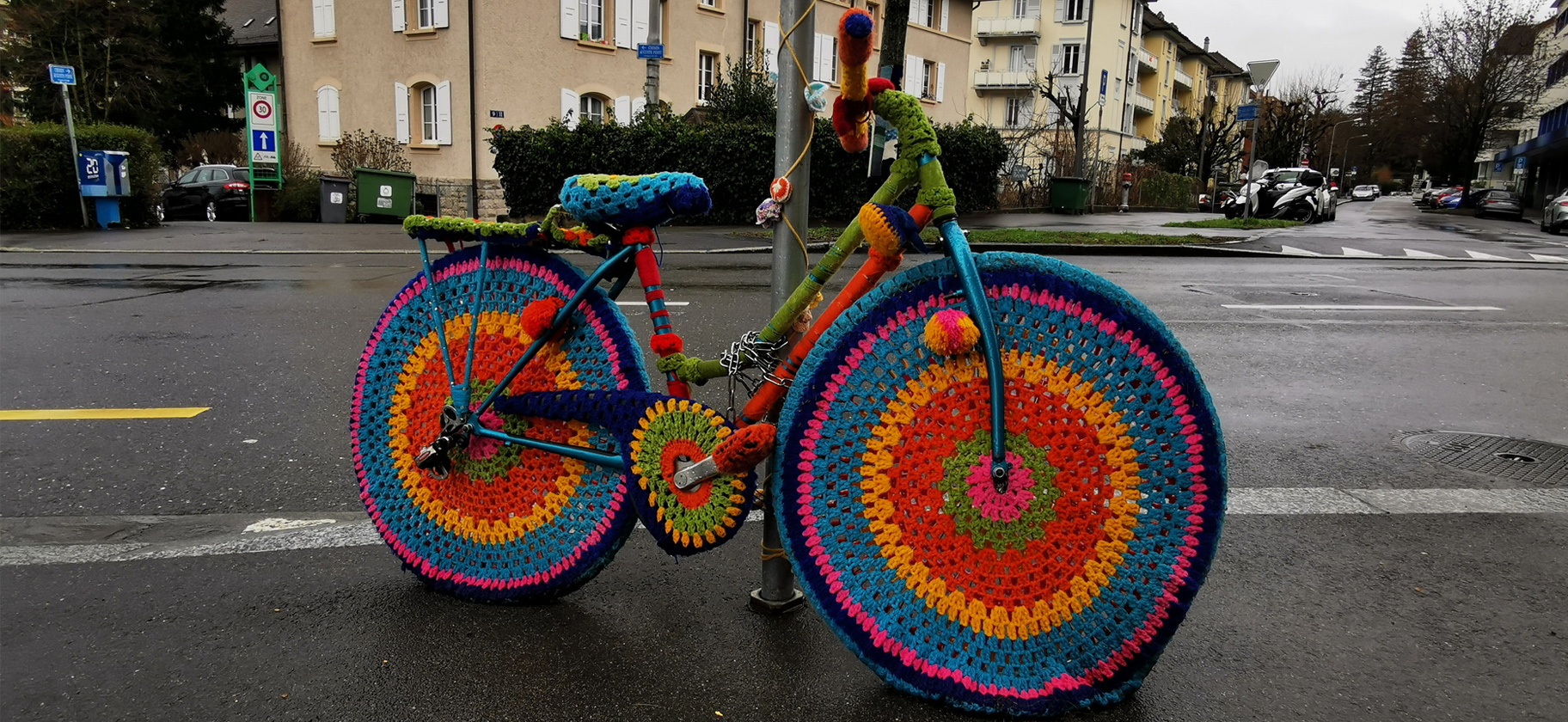
As I investigated who might be responsible for this amazing project, I was both shocked and delighted to learn that there was no single creative mind behind it all but that it was, in fact, organized completely within the community. With a minuscule budget of 5,000 Swiss francs (used almost exclusively to purchase all of that yarn), the creators of this amazing open-air museum were composed completely of volunteers who lived only steps away from the very street they were decorating. In 2019, the project was proposed, a website was set up, and flyers were distributed in public spaces nearby. Hundreds participated, many of whom had no previous knitting experience.
It was grey and rainy in Lausanne that day. Moreover, the surge in cases from the coronavirus pandemic had closed businesses of all kinds and given people in Switzerland and around the world more than enough reasons just to stay home. But, along the Avenue de la Harpe there was a small sparkle of joy that could not be subdued.
I remembered visiting Switzerland 20 years earlier and noticing how all of the traffic lines appeared to be freshly painted. At that time, there was a newness and a polish to this place compared to North America and other parts of Europe that I took notice of but could not explain. As time has passed and I have travelled more, everywhere I go I notice the refuse that lingers in streets and in city parks. I notice the cigarette butts between the cracks in the sidewalks and the chip bags that were carelessly thrown toward a public trash can and missed their target. I notice the discarded chewing gum that has become one with the pavement and I notice the soda cans and beer bottles that nest in the bushes. Switzerland is not immune to litter or thoughtlessness, but where it does seem to differ from so many places is in its sense of civic pride.
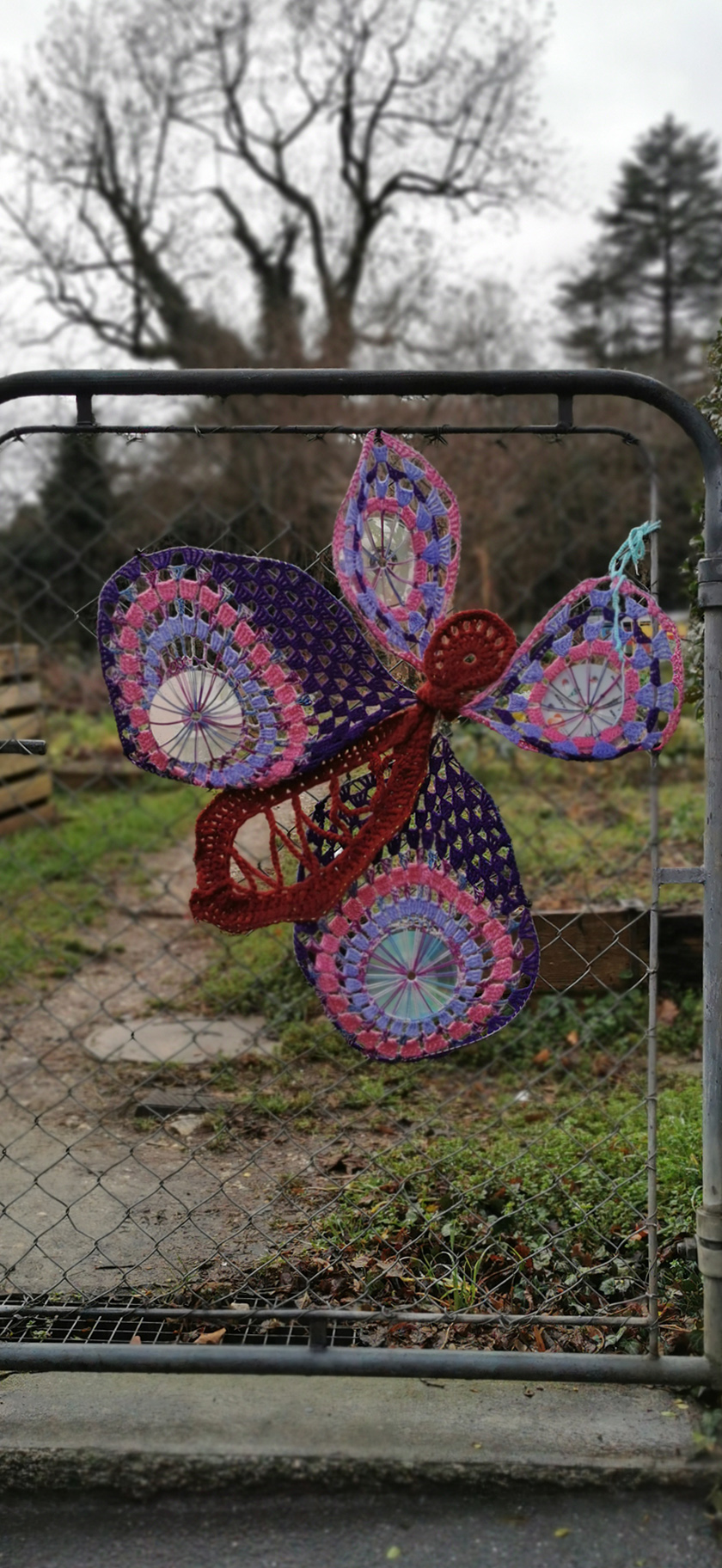
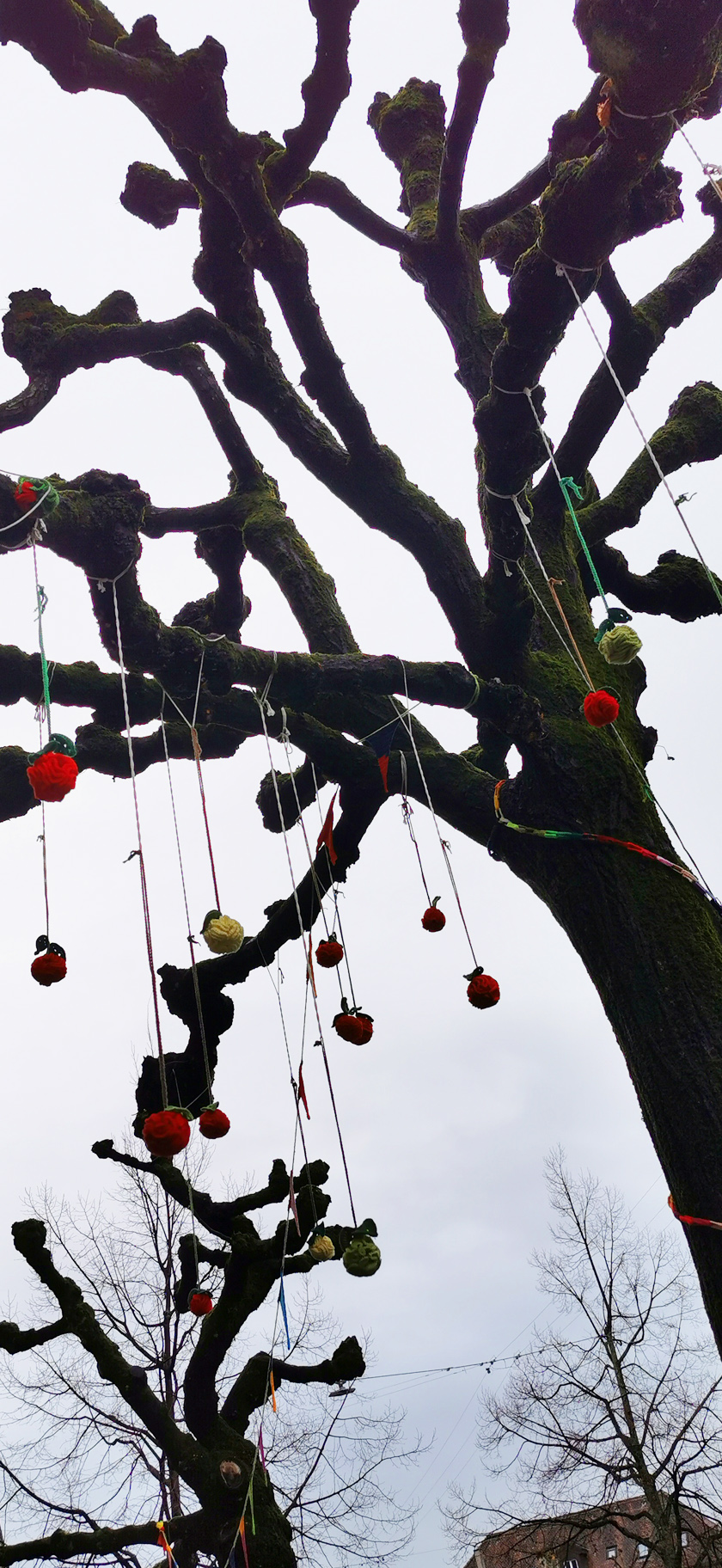
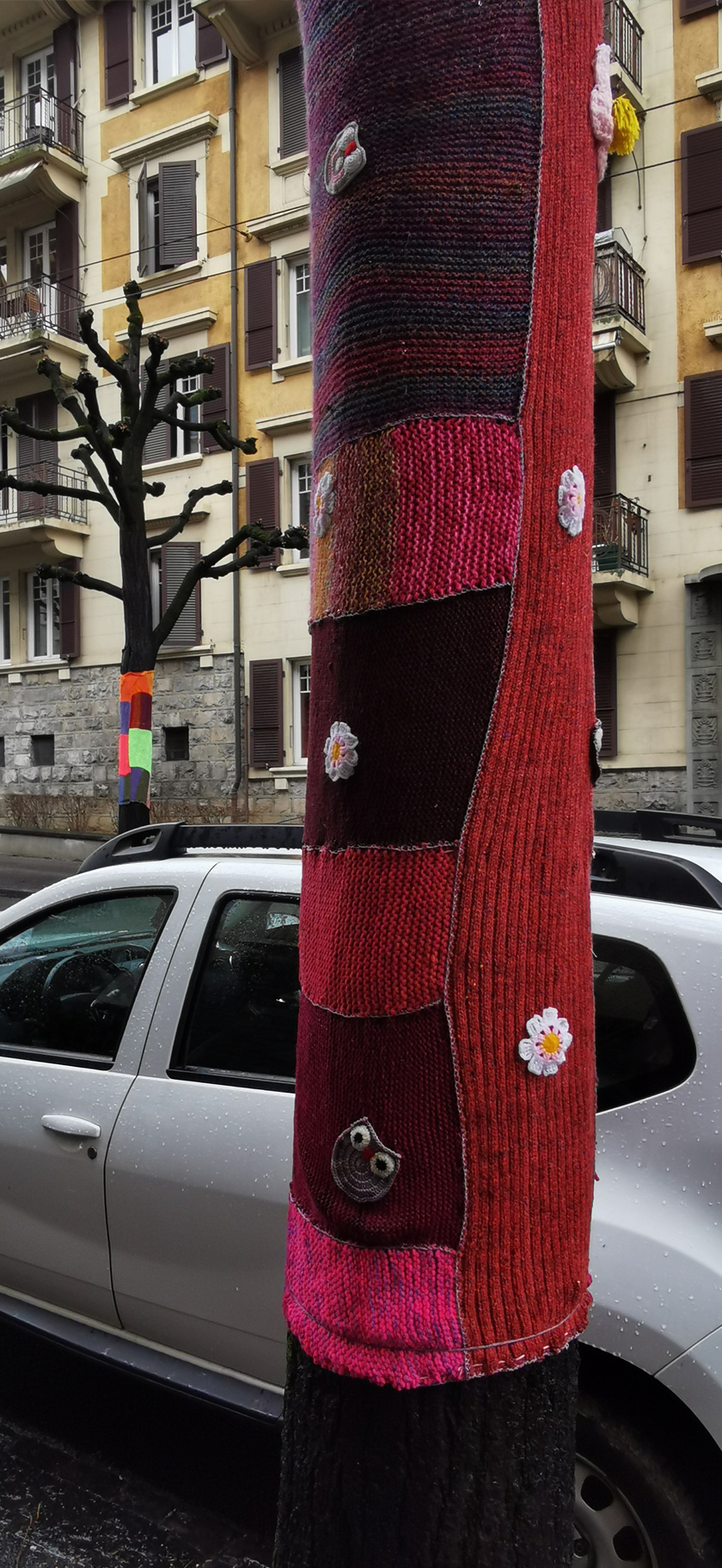
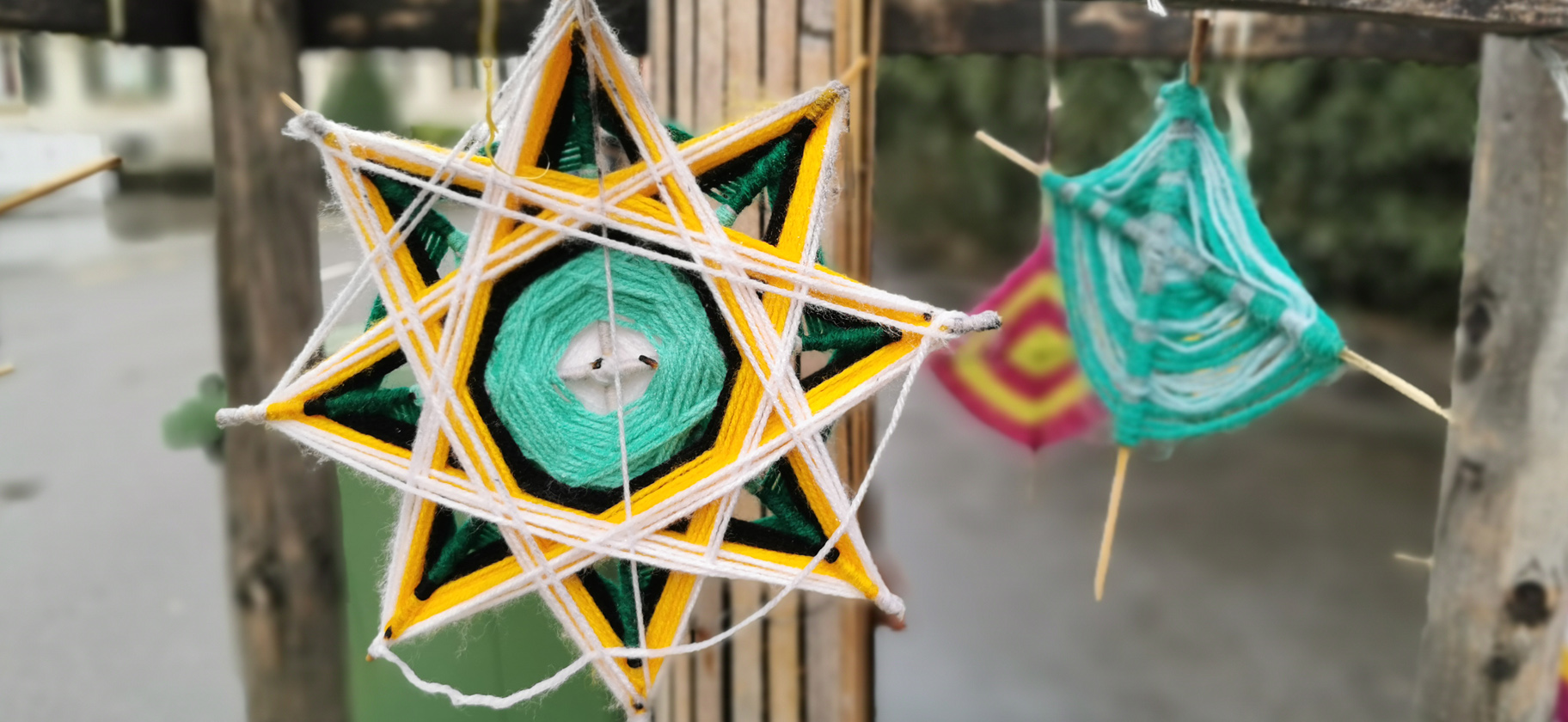
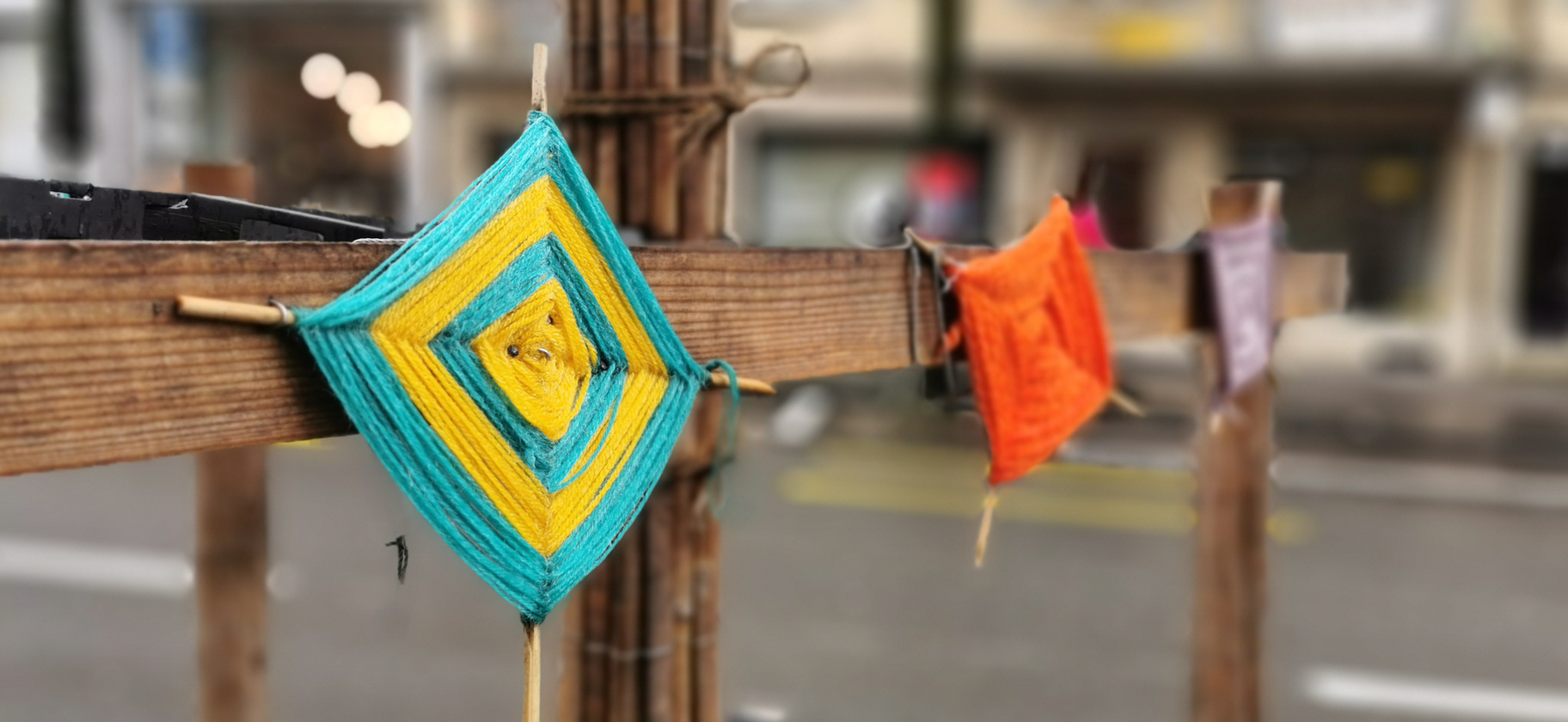
In city parks around the world, there are public basketball courts and I am always amazed whenever I see a cloth netting dangling from the hoops. Occasionally the courts will have a chain netting, but more commonly the hoop is bare and the backboard is stained with graffiti. I try to conjure the idea of a community project like the one along la Harpe in the cities in which I have lived and imagine a dearth of participation, or the project suffering through damage and abuses within hours of completion. While walking along that avenue in Lausanne I found myself touching the yarn just to make sure that it was real. I could feel that it was wet from the rain and it evoked a sense of fragility in those threads and in all things. Tracing my fingers along every soaking wet fibre reminded me of the fact that these small expressions of beauty were no more immune to the elements as they would have been to just one thoughtless troublemaker believing he could destroy someone’s hard work for no good reason beyond their demented pleasure. Still, there it all was in its glorious beauty just as it had been for more than a year and appearing just as it had on the first day but for a few days of rain between then and now.
Flights around the world were being grounded again and travelling to these small haunts was becoming less and less possible. Cases were rising and new more virulent variants of the virus were sending communities into a panic. I was scrambling to find a safe harbour where I could settle for a while to wait out this portion of the storm but not before I was given yet another reminder of what we are capable of when we refuse to surrender our sense of joy and goodness. Inside even the most wicked of us is a kernel of kindness and everyone is redeemable. Before all things, we need to be ready at every opportunity to forgive.
No brochure or guidebook on Lausanne would point you in the direction of La Harpe, but, in a time of profound darkness for every human community across the world, the small and insignificant morsel of creativity of the people of Ouchy was inspirational enough to convince this weary traveller that there will always be hope and light somewhere that refuses to be extinguished. I have never gained any comfort from the news of the day and politicians excel only in their ability to disappoint. The progress of science and technology march on seemingly to invent a problem for every solution and there will always seem to be one sick and twisted human mind capable of demolishing in mere seconds what took centuries to build. Margaret Mead once wrote: “Never doubt that a small group of thoughtful, committed, citizens can change the world. Indeed, it is the only thing that ever has.” To the citizens of Lausanne and Ouchy, and every volunteer that contributed their knitting needles and time to the Tricot Graffiti de la Harpe project, know that your thoughtfulness and commitment inspired at least one sad soul who needed lifting at the very moment that he found you. Do not ever waiver in the course you have set in pointing every travelling soul toward a future that is a little more hopeful than the one in which we currently find ourselves. The clouds will part and the rain will cease to fall on your sidewalks but the colours of the thoughtfulness and commitment of your citizens will never fade. May that thoughtfulness and commitment inspire us all to build better, stronger, more colourful, and more tightly knit communities.
